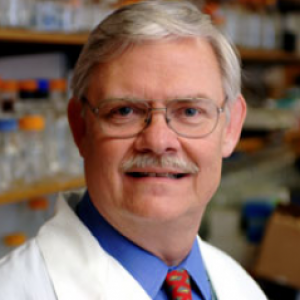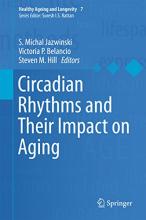S. Michal Jazwinski
John W. Deming, MD Regents Chair in Aging, Professor of Medicine and Biochemistry

Biography
Dr. S. Michal Jazwinski received his doctoral degree from Stanford University. He completed postdoctoral training at The Rockefeller University where he stayed on as assistant professor. He moved to Louisiana State University Health Sciences Center in New Orleans as associate professor, where he achieved the rank of professor. He is currently professor of medicine and professor of biochemistry at Tulane University. He also directs the Tulane Center for Aging.
Dr. Jazwinski is active in research and education with a focus on aging and especially the genetics of aging.
Education
Stanford University
Articles
cGAS drives noncanonical-inflammasome activation in age-related macular degeneration
2017
Geographic atrophy is a blinding form of age-related macular degeneration characterized by retinal pigmented epithelium (RPE) death; the RPE also exhibits DICER1 deficiency, resultant accumulation of endogenous Alu-retroelement RNA, and NLRP3-inflammasome activation. How the inflammasome is activated in this untreatable disease is largely unknown. Here we demonstrate that RPE degeneration in human-cell-culture and mouse models is driven by a noncanonical-inflammasome pathway that activates caspase-4 (caspase-11 in mice) and caspase-1, and requires cyclic GMP-AMP synthase (cGAS)-dependent interferon-β production and gasdermin D–dependent interleukin-18 secretion. Decreased DICER1 levels or Alu-RNA accumulation triggers cytosolic escape of mitochondrial DNA, which engages cGAS. Moreover, caspase-4, gasdermin D, interferon-β, and cGAS levels were elevated in the RPE in human eyes with geographic atrophy. Collectively, these data highlight an unexpected role of cGAS in responding to mobile-element transcripts, reveal cGAS-driven interferon signaling as a conduit for mitochondrial-damage-induced inflammasome activation, expand the immune-sensing repertoire of cGAS and caspase-4 to noninfectious human disease, and identify new potential targets for treatment of a major cause of blindness.
Adaptation to metabolic dysfunction during aging: Making the best of a bad situation
2018
Mitochondria play a central role in energy metabolism in the process of oxidative phosphorylation. As importantly, they are key in several anabolic processes, including amino acid biosynthesis, nucleotide biosynthesis, heme biosynthesis, and the formation of iron‑sulfur clusters. Mitochondria are also engaged in waste removal in the urea cycle. Their activity can lead to the formation of reactive oxygen species which have damaging effects in the cell. These organelles are dynamic, undergoing cycles of fission and fusion which can be coupled to their removal by mitophagy. In addition to these widely recognized processes, mitochondria communicate with other subcellular compartments. Various components of mitochondrial complexes are encoded by either the nuclear or the mitochondrial genome necessitating coordination between these two organelles. This article reviews another form of communication between the mitochondria and the nucleus, in which the dysfunction of the former triggers changes in the expression of nuclear genes to compensate for it. The most extensively studied of these signaling pathways is the retrograde response whose effectors and downstream targets have been characterized. This response extends yeast replicative lifespan by adapting the organism to the mitochondrial dysfunction. Similar responses have been found in several other organisms, including mammals. Declining health and function during human aging incurs energetic costs. This compensation plays out differently in males and females, and variation in nuclear genes whose products affect mitochondrial function influences the outcome. Thus, the theme of mitochondria-nucleus communication as an adaptive response during aging appears very widespread.
Metabolic and Genetic Markers of Biological Age
2017
Biological age is a concept that takes into account the heterogeneity of the aging process in different individuals that results in differences in survival and variations in relative health. Any measure of biological age must be better than chronological age at predicting mortality. Several quantitative measures of biological age have been developed. Among them are frailty indices, one of which called FI34 is discussed here in greater detail. FI34 increases exponentially with age reflecting decline in health and function ability. It readily depicts different patterns and trajectories of aging, and it is moderately heritable. Thus, it has been used to identify a genomic region on chromosome 12 associated with healthy aging. FI34 has also been useful in describing the metabolic characteristics of this phenotype, revealing both sex and genetic differences. These differences give rise to specific, testable models regarding healthy aging, which involve cell and tissue damage and mitochondrial metabolism. FI34 has been directly compared to various metrics based on DNA methylation as a predictor of mortality, demonstrating that it outperforms them uniformly. This and other frailty indices take a top-down, systems based view of aging that is cognizant of the integrated function of the complex aging system.
Biological Aging and the Human Gut Microbiota
2017
The human gastrointestinal microbiota plays a key homeostatic role in normal functioning of physiologic processes commonly undermined by aging. We used a previously validated 34-item frailty index (FI34) to identify changes in gut microbiota community structure associated with biological age of community-dwelling adults. Stool 16S rRNA cDNA libraries from 85 subjects ranging in age (43–79) and FI34 score (0–0.365) were deep sequenced, denoised, and clustered using DADA2. Subject biological age but not chronological age correlated with a decrease in stool microbial diversity. Specific microbial genera were differentially abundant in the lower, middle, and upper 33rd percentiles of biological age. Using Sparse Inverse Covariance Estimation for Ecological Association and Statistical Inference (SPIEC-EASI) and Weighted Gene Co-Expression Network Analysis (WGCNA), we identified modules of coabundant microbial genera that distinguished biological from chronological aging. A biological age-associated module composed of Eggerthella, Ruminococcus, and Coprobacillus genera was robust to correction for subject age, sex, body mass index, antibiotic usage, and other confounders. Subject FI34 score positively correlated with the abundance of this module, which exhibited a distinct inferred metagenome as predicted by Phylogenetic Investigation of Communities by Reconstruction of Unobserved States (PICRUSt). We conclude that increasing biological age in community-dwelling adults is associated with gastrointestinal dysbiosis.
The frailty index outperforms DNA methylation age and its derivatives as an indicator of biological age
2017
The measurement of biological age as opposed to chronological age is important to allow the study of factors that are responsible for the heterogeneity in the decline in health and function ability among individuals during aging. Various measures of biological aging have been proposed. Frailty indices based on health deficits in diverse body systems have been well studied, and we have documented the use of a frailty index (FI34) composed of 34 health items, for measuring biological age. A different approach is based on leukocyte DNA methylation. It has been termed DNA methylation age, and derivatives of this metric called age acceleration difference and age acceleration residual have also been employed. Any useful measure of biological age must predict survival better than chronological age does. Meta-analyses indicate that age acceleration difference and age acceleration residual are significant predictors of mortality, qualifying them as indicators of biological age. In this article, we compared the measures based on DNA methylation with FI34. Using a well-studied cohort, we assessed the efficiency of these measures side by side in predicting mortality. In the presence of chronological age as a covariate, FI34 was a significant predictor of mortality, whereas none of the DNA methylation age-based metrics were. The outperformance of FI34 over DNA methylation age measures was apparent when FI34 and each of the DNA methylation age measures were used together as explanatory variables, along with chronological age: FI34 remained significant but the DNA methylation measures did not. These results indicate that FI34 is a robust predictor of biological age, while these DNA methylation measures are largely a statistical reflection of the passage of chronological time.





